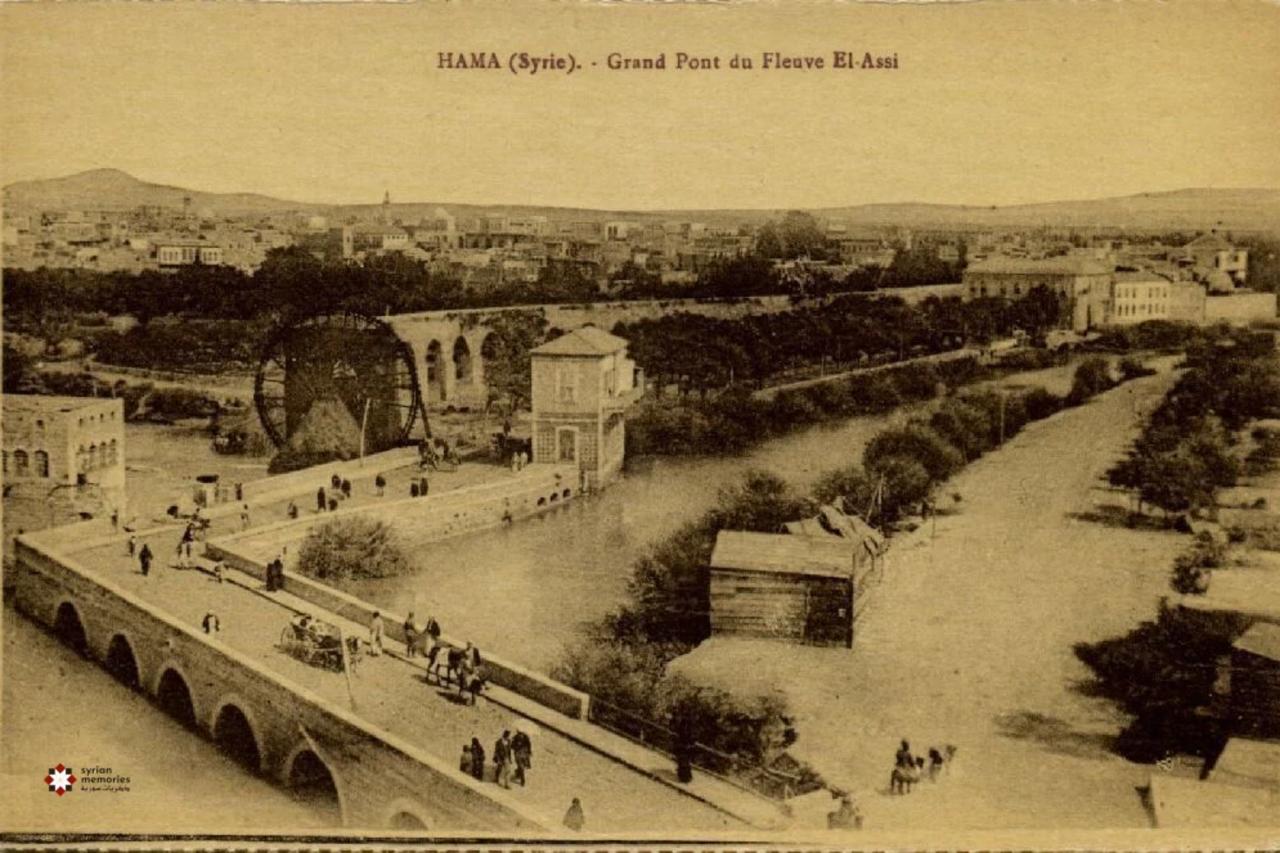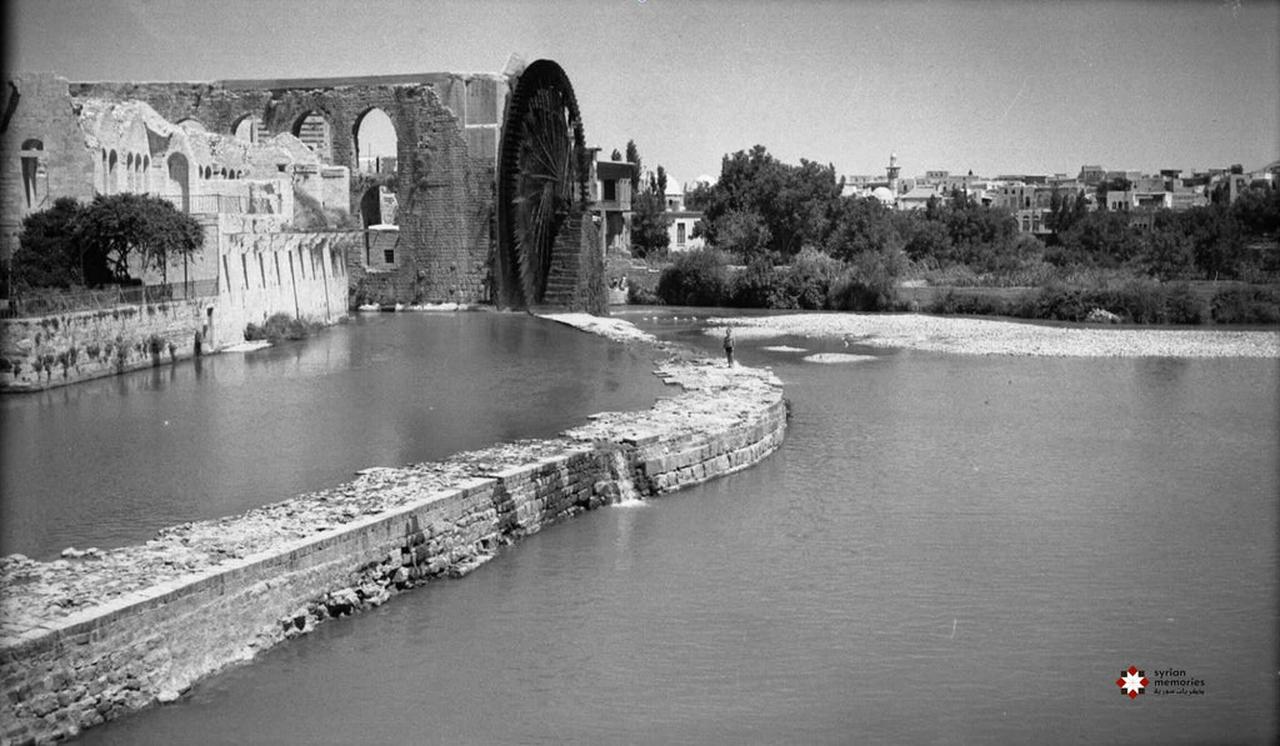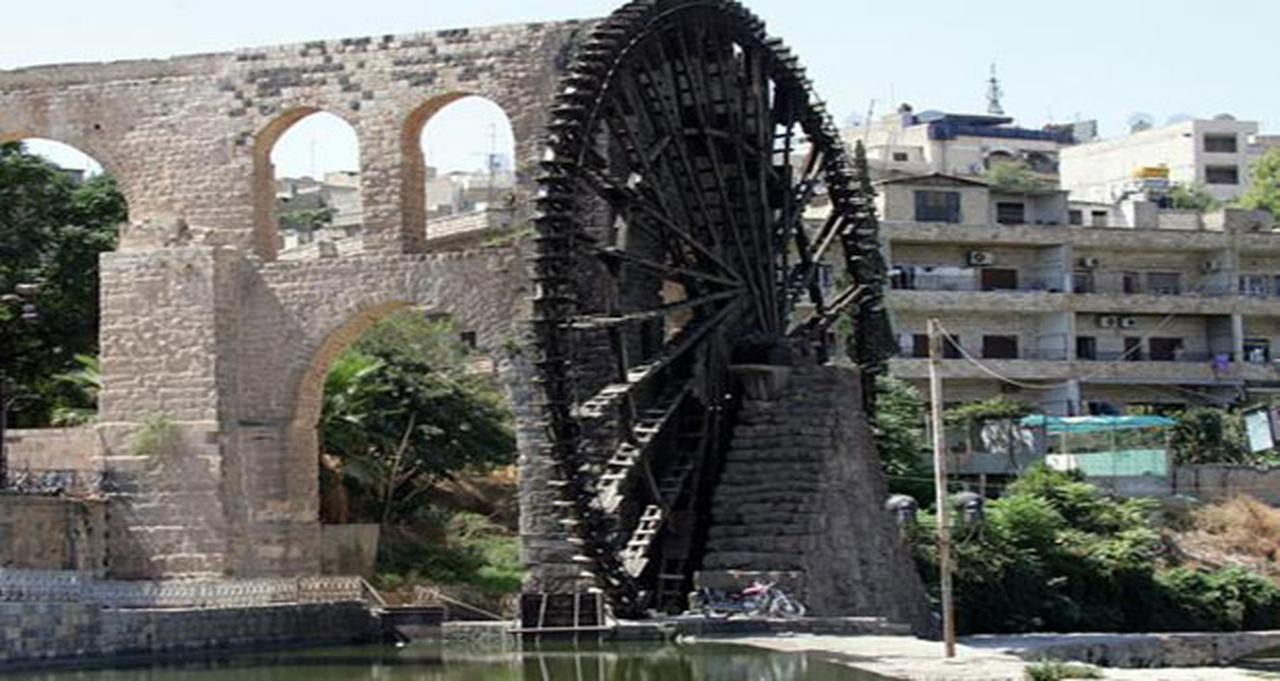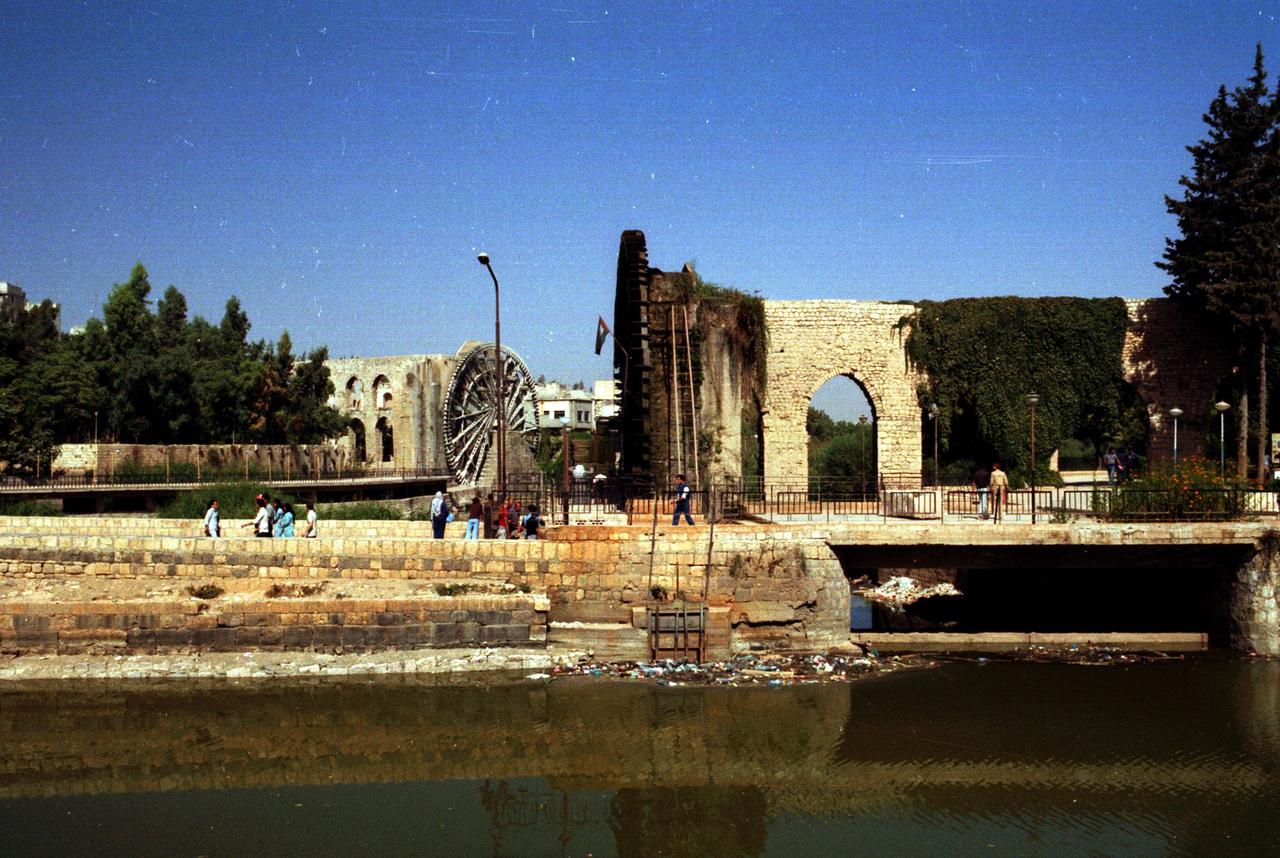
The name of the city of Hama is associated with the city of waterwheels. Located in the western part of the country along the Orontes River, approximately 210 kilometers north of the capital, Damascus, the city of Hama in Syria is renowned for the beauty of its norias—water wheels that date back to the Ottoman era.
This is the main city in its region, located within a vast, semi-arid area that could not have developed without its complete reliance on waterwheels.
Hama Norias are massive wooden waterwheels installed vertically along the Orontes River in the city of Hama.

They are a unique method for lifting and distributing water and have been one of the defining features of cities along the Orontes River basin throughout history.
According to Hama Governorate statistics in 2003, the number of waterwheels across Hama Governorate is 103, located in 60 locations.
Historians differ on when the norias of Hama first appeared. Some argue they date back to the Aramean period (around 1000 BC), while others believe they emerged in Hama during the Hellenistic period (2nd century BC). The earliest depiction of a noria appears on a mosaic from the ancient city of Apamea, dating to 469 AD, which is currently housed in the National Museum of Damascus.
Another one that dates back to the Ottoman Empire is Noria al-Uthmaniyya (formerly known as Al-Masrouda). This medium-sized noria, with a wheel diameter of 11 meters (36 feet), was completely restored in 1980. It sits behind Noria al-Ma’muriyya. Named after Othman pasha, it once supplied water to the Ottoman Bath and the Al-Khanqah Mosque.

One of the most prominent norias still standing is the Muhammadiya Noria, dating back to the Mamluk period in 1361 AD. It is considered one of the largest norias in the city, with a wheel diameter of 21 meters and a channel height of 17.5 meters. Another well-documented and still existing large noria is the Mamuriya Noria, with a diameter of 21 meters (69 feet), built in the early Ottoman era in 1453 AD.

Notably, the norias of Hama reached their peak development and received significant attention during the Ottoman period, benefiting from advanced irrigation systems and important upgrades.

In 1999, UNESCO placed the norias of Hama on its Tentative List of World Heritage Sites.

The norias of Hama captivated the attention of the famous Ottoman traveler Uliya Celbi, who wrote:
“In Hama, there are grand norias installed on the Orontes River. Visitors can hear their groaning from afar. These wheels are made of wood, columns, and iron nails, remarkable for their height and massive size. The water lifted by these norias is channeled through aqueducts to the town’s palaces, homes, baths, mosques, and caravanserais. Each noria has its own endowments, revenues, servants, and carpenters assigned for its maintenance. When a stranger approaches, the noise is almost deafening. What is even more surprising is to see Hama’s street boys clinging to the edges of the norias, spinning with them, then throwing themselves into the Orontes River, where they dive and swim.”

He continued describing these norias and their impact on the city:
“Hama is home to hundreds of gardens and orchards irrigated by these norias, with every orchard having two or three. The greatest among them is the Muhammadiya Noria, renowned among travelers and still standing today in Hama. It remains the largest and most impressive of all.”